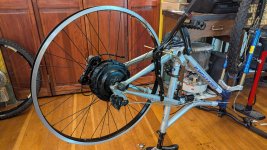After three days of research and calculations, it seems that building an e-bike by purchasing a second-hand quality frame and combining it with a good conversion kit ends up being roughly 30% more expensive than buying a ready-made e-bike from a lesser-known brand with comparable power and features.
Would you agree with this observation, or how would you refine this assessment
?
Would you agree with this observation, or how would you refine this assessment
?


